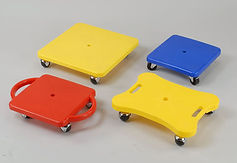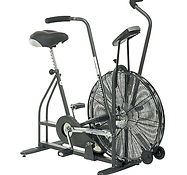
INVERSION ANKLE SPRAIN
Carley Maanika, ATS
Kelley Galloway, ATS
Jessica Krali, ATS
Northern Michigan University
Pathology, Diagnosis, and Getting On Track with Rehabilitation
EARLY STAGES OF REHABILITATION
During the early stage of rehabilitation, the injured body part is going through the inflammatory response stage, where the body is starting to slowly heal. It is important to manage swelling and pain symptoms, as well as protect the injured body part from further damage. Often during this phase, rehabilitators will often utilize rest, immobilization, ice, compression, anti-inflammatory medications, and light range of motion exercises. An athlete with a grade two ankle sprain will usually go through the inflammatory response stage for three to fourteen days (Prentice, 2011).
Goals of Rehabilitation at the Inflammatory Response Phase (0-3/14 days)
1. Structural Integrity
2. Pain-free Range of Motion
3. Flexibility
4. Cardiovascular Fitness (Maintain)
Ice Bucket

The patient will put her ankle in the ice bucket for 8 minutes. With her foot in the ice bucket, she will trace the ABC's, capital letters, in thirty seconds every other thirty seconds
Range of Motion - Passive & Active
Image from Google Images
The patient will perform active ankle range of motion from neutral in all directions (plantarflexion, dorsiflexion, inversion, & eversion) as far as she can go. The clinician will also perform passive range of motion in all ranges as far as tolerable by the patient.
-
Three sets of ten, both active and passive.
Marble Pick Up
The patient will scatter 20 marbles in front of her along with a small cup or basket. The patient will then use her toes to pick up the marbles and put them in the cup/basket. The patient will do this two times with a goal of putting all twenty marbles in the basket in under a minute.
BAPS Board
The patient will use the BAPS board to help improve range of motion. The patient will go clockwise ten times with a focus on having a edge of the BAPS board in constant contact with the ground. She will do the same but go counterclockwise. She will go both directions ten time each for two sets.
Active Assitive Ankle Scooter Scoots

While sitting on a low foot stool, the patient will place her injured foot on the scooter, with athletic shoes on to help maintain contact, push her foot out as far as she and then pull it back. The patient will push her foot out and back 20 times for three sets.
Image taken from Google Images
http://youtu.be/FQ0F2InbFTU Retrieved on April 22, 2014
http://youtu.be/b_WzQGcbh1E Retrieved on April 22, 2014
http://youtu.be/u4ww_nNWOh0 Retrieved on April 22, 2014
Airdyne Bike
To help maintain cardiovascular fitness, the athlete will ride the airdyne bike, emphasizing upper body movements, for at least thirty minutes a day, three times a week. As the patient progresses and has structural integrity, the patient can use the foot pedals to assist in ankle range of motion.

Image retrieved from Google on April 30, 2014
Ankle Weight Shifts
To progress the patient from partial weight bearing to weight bearing, the patient will perform ankle weight shifts. The patient will begin standing with almost all weight on the uninjured foot next to a sturdy surface in case of the need for extra balance. The patient will slowly shift her weight onto the injured foot as much as tolarated, hold for ten seconds, then shift the weight back. The patient will perform ten shifts for three sets. As the patient progress the following variations can be iincorporated; the first being that the patient can start with equal distrubution of weight on both feet and shift more weight to the injured foot and the second variation being to hold the weight on the injured foot longer.

Image retrieved from Google on April 30, 2014